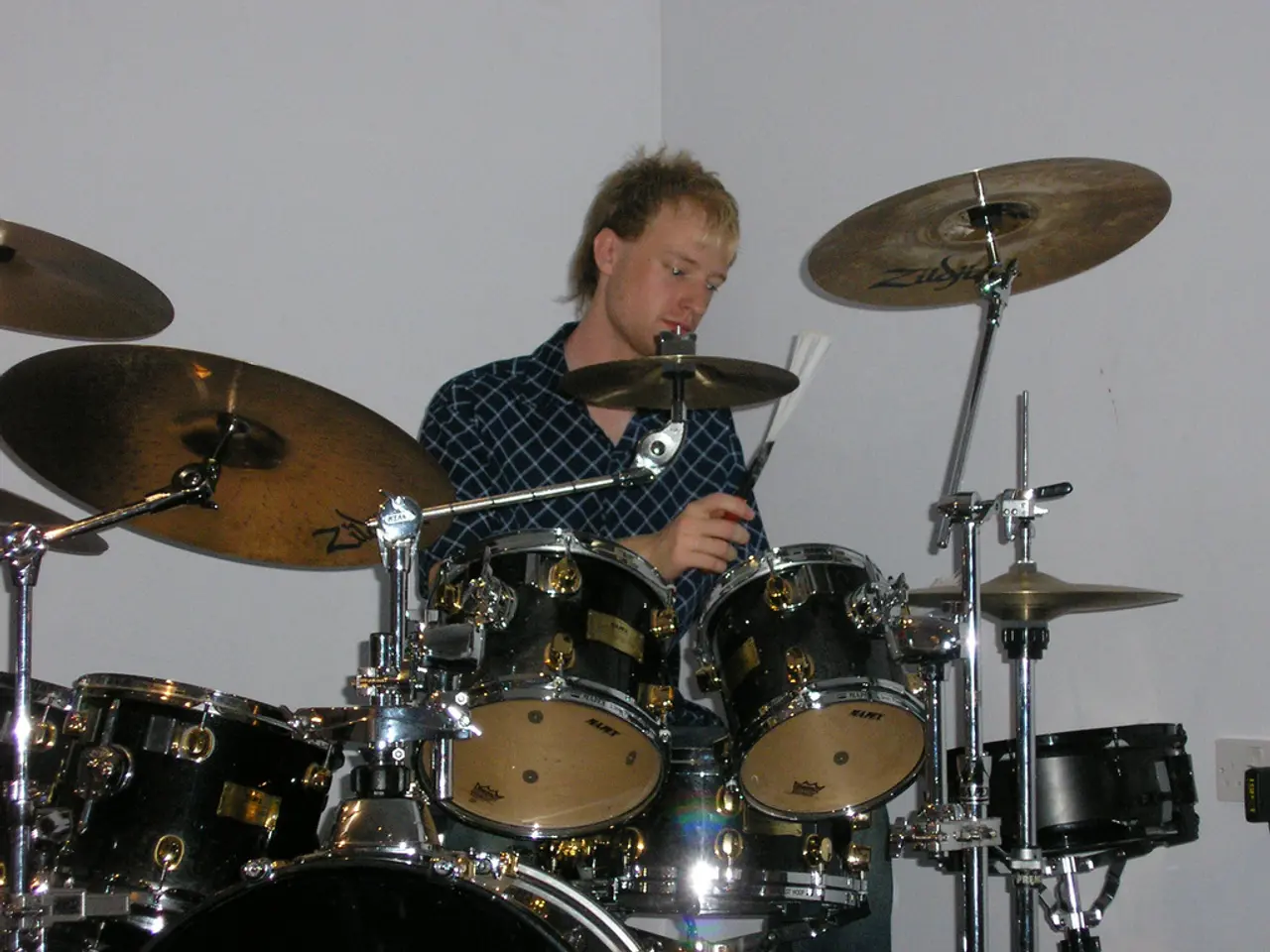"Evolution of drum recording techniques: Decades of small adjustments and audible experimentation have molded the current standards for capturing drum sounds"
In the world of music production, the art of recording drums has undergone a significant transformation over the years. From the early days of close miking techniques to the modern approach of separating drum and cymbal recordings, the journey has been one of innovation and creativity.
One of the earliest techniques involved setting up the kit with dummy cymbals or electronic pads and doing a second pass just to capture the cymbals. This method was first documented in the 1960s by Norman Smith, the Beatles' engineer, as a way to get more definition and punch from the kit.
Another technique that gained popularity before the widespread availability of drum machines was recording individual drums separately. This method, which was more than likely first used in the 1970s, has since become popular with hard rock and metal producers. Recording drums separately allows for greater control over each drum sound, enabling producers to create unique and intricate drum tracks.
Close miking of drums was developed as a way to further enhance the separation and clarity of individual drum sounds. As dynamic mics became better and more types became available, concerns about using expensive and delicate ribbon or capacitor mics in close proximity to loud sources lessened. Geoff Emerick, a key figure in developing close miking techniques, further advanced this approach by adding a side snare mic and more mics around the kit.
Drum dampening is another technique used to control the sound of drums. In the past, people had to be creative with drum dampening techniques, and popular methods included using a pillow in the kick drum, a wallet on the snare drum, a tea towel on the snare or toms, and gaffa tape. Today, drum manufacturers have developed various options to help modify drum resonance and sustain, including internal felt dampers, multiple ply and oil-filled heads, gel pads, ring mufflers, and snare weight devices.
The Glyn Johns method is a notable example of a unique drum recording technique. Johns uses a pair of Neumann U67s (large capsule valve cardioids) and places one behind the floor tom and one overhead, with equidistant and pointing positions at the snare. This configuration results in a big sound with clear separation of the individual drum sounds.
Innovative approaches to drum recording were also pioneered by figures like Joe Meek in the 1950s. Meek's work, along with that of engineers like Les Paul and producers like Phil Ramone, evolved from simple microphone placement to sophisticated multi-mic setups enhancing clarity and control over individual drum sounds.
Notable examples of the separate recording of drums can be found in the works of producers like Steely Dan and Glyn Johns. Steely Dan, known for their meticulous productions, used studio trickery to create the perfect drum track, including looping 8 bar sections of 24 track tape and using a sampling computer named Wendel to create repetitive drum parts from their own takes. Glyn Johns, on the other hand, developed a unique drum recording technique using minimal mics in a specific configuration, resulting in a big sound with clear separation of the individual drum sounds.
A notable example of the separate recording of drums can be found in the works of producers like Steely Dan and Glyn Johns. Steely Dan, known for their meticulous productions, used studio trickery to create the perfect drum track, including looping 8 bar sections of 24 track tape and using a sampling computer named Wendel to create repetitive drum parts from their own takes. Glyn Johns, on the other hand, developed a unique drum recording technique using minimal mics in a specific configuration, resulting in a big sound with clear separation of the individual drum sounds.
Another interesting technique is the tea towel technique, particularly popular for disco style snares as it deadens the drum while still allowing some stick attack for solid backbeat sounds. This method, along with other creative dampening techniques, has helped shape the sound of drums in music over the years.
In conclusion, the art of recording drums has evolved significantly over the years, influenced by factors such as the desired sound, complexity of the drum part, playing of the drummer, and acoustics of the recording space. From the early days of close miking techniques to the modern approach of separating drum and cymbal recordings, the journey has been one of innovation and creativity.
Read also:
- Impact of Alcohol on the Human Body: Nine Aspects of Health Alteration Due to Alcohol Consumption
- Understanding the Concept of Obesity
- Microbiome's Impact on Emotional States, Judgement, and Mental Health Conditions
- Criticisms levelled by a patient advocate towards MPK's judgement on PCR testing procedures








